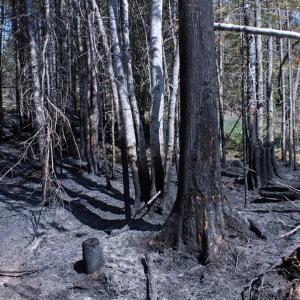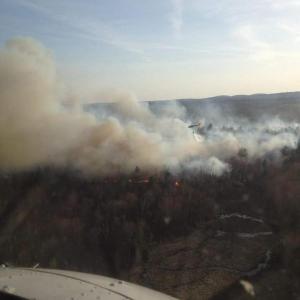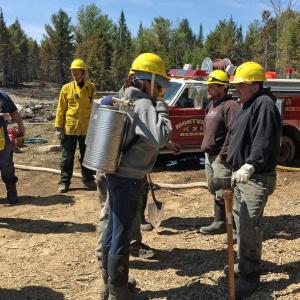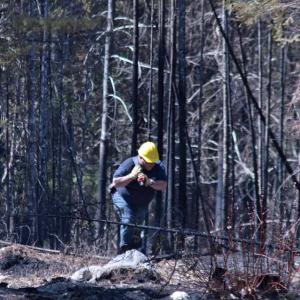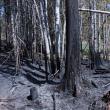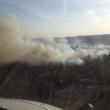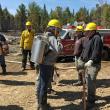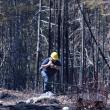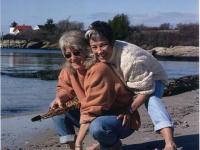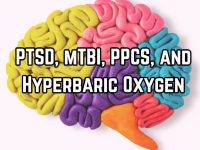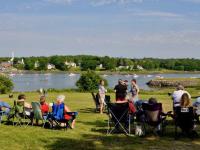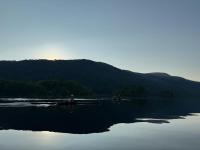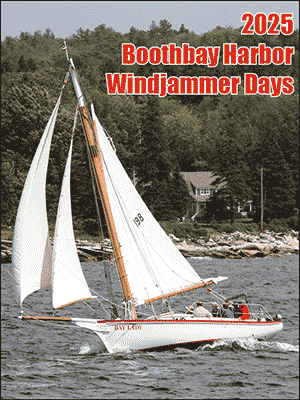No outdoor burning this weekend, not even small campfires
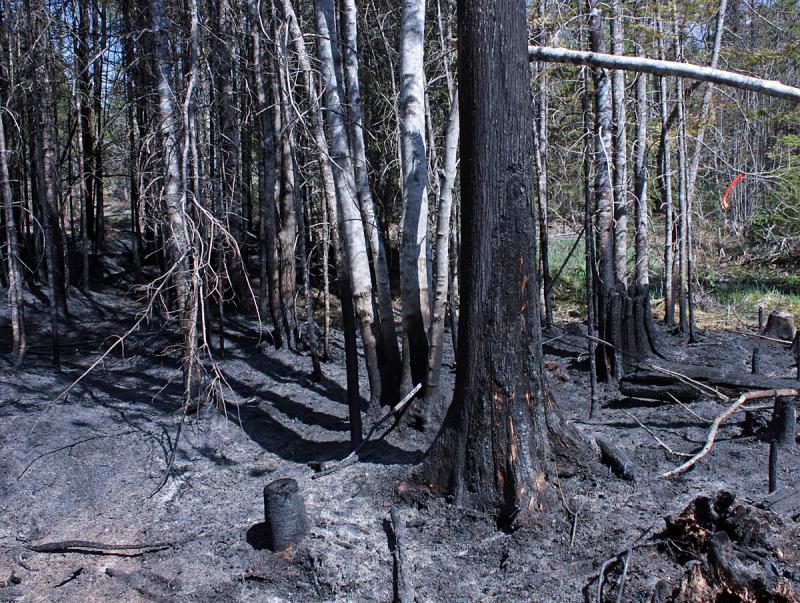 Woods and wildfires can have devastating and lasting effects on the flora and fauna of the area, including killing young and newborn animals and displacing others. This photo is from a woods fire in Searsmont in May 2015 that took three days, more than 100 people and a state helicopter with water to finally extinguish. (Photo by Holly S. Edwards)
Woods and wildfires can have devastating and lasting effects on the flora and fauna of the area, including killing young and newborn animals and displacing others. This photo is from a woods fire in Searsmont in May 2015 that took three days, more than 100 people and a state helicopter with water to finally extinguish. (Photo by Holly S. Edwards)
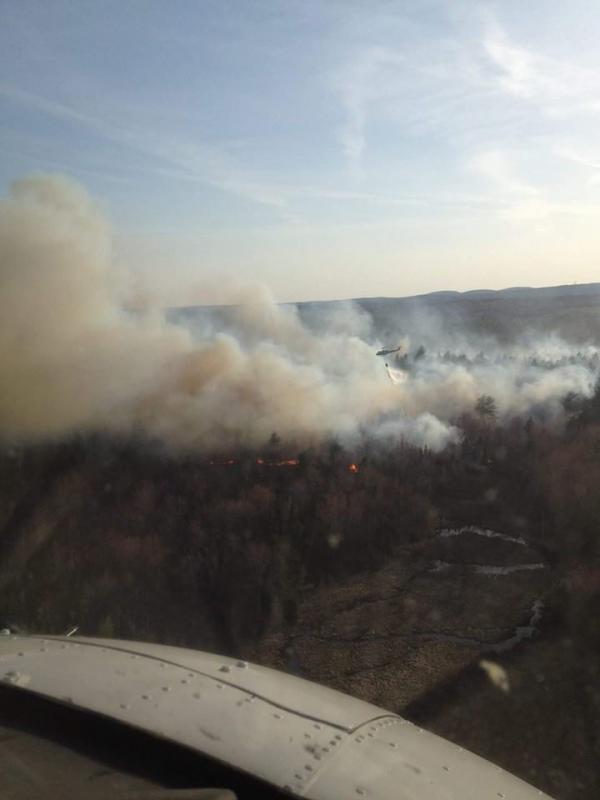 A view from above of the May 2015 Jackson Road wildfire in Searsmont. (Courtesy Maine Forest Service)
A view from above of the May 2015 Jackson Road wildfire in Searsmont. (Courtesy Maine Forest Service)
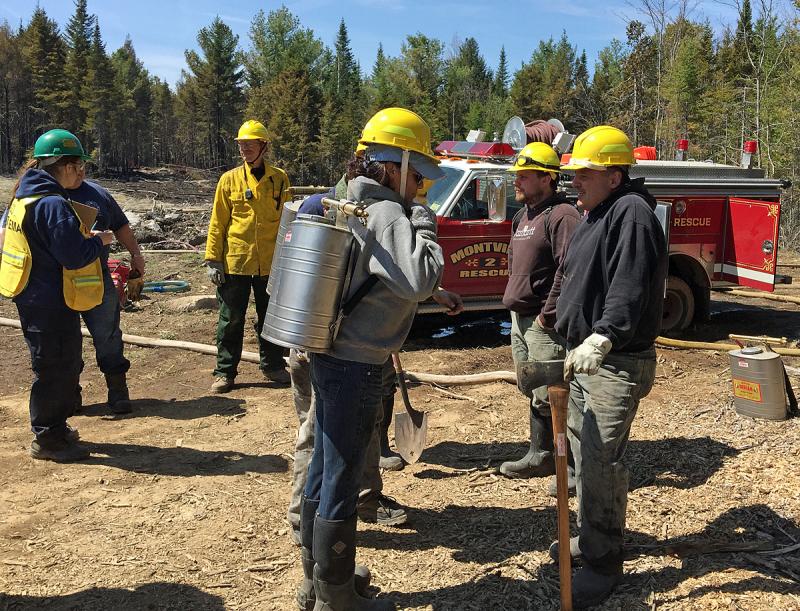 Battling a woods or grass fire most often requires carrying water in on foot via portable 5-gallon tanks. (Photo by Holly S. Edwards)
Battling a woods or grass fire most often requires carrying water in on foot via portable 5-gallon tanks. (Photo by Holly S. Edwards)
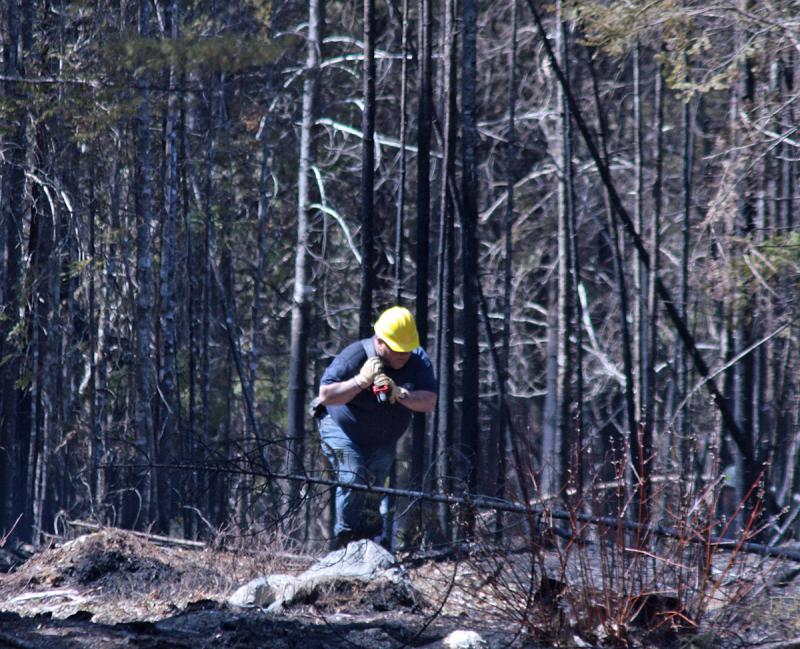 Sometimes, hoses can be brought short distances into woods fires, but it’s hard work lugging them in, and then out again. (Photo by Holly S. Edwards)
Sometimes, hoses can be brought short distances into woods fires, but it’s hard work lugging them in, and then out again. (Photo by Holly S. Edwards)
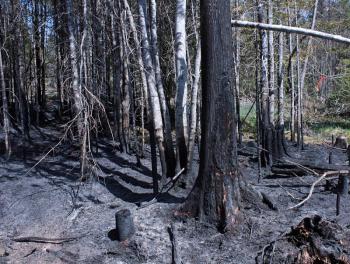 Woods and wildfires can have devastating and lasting effects on the flora and fauna of the area, including killing young and newborn animals and displacing others. This photo is from a woods fire in Searsmont in May 2015 that took three days, more than 100 people and a state helicopter with water to finally extinguish. (Photo by Holly S. Edwards)
Woods and wildfires can have devastating and lasting effects on the flora and fauna of the area, including killing young and newborn animals and displacing others. This photo is from a woods fire in Searsmont in May 2015 that took three days, more than 100 people and a state helicopter with water to finally extinguish. (Photo by Holly S. Edwards)
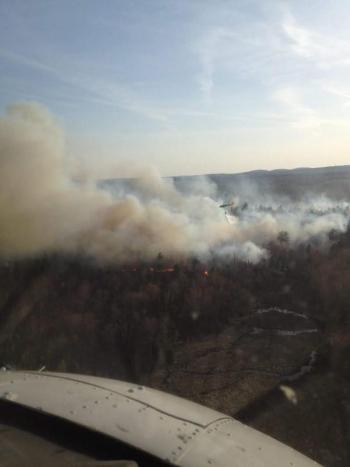 A view from above of the May 2015 Jackson Road wildfire in Searsmont. (Courtesy Maine Forest Service)
A view from above of the May 2015 Jackson Road wildfire in Searsmont. (Courtesy Maine Forest Service)
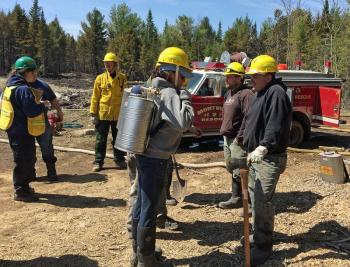 Battling a woods or grass fire most often requires carrying water in on foot via portable 5-gallon tanks. (Photo by Holly S. Edwards)
Battling a woods or grass fire most often requires carrying water in on foot via portable 5-gallon tanks. (Photo by Holly S. Edwards)
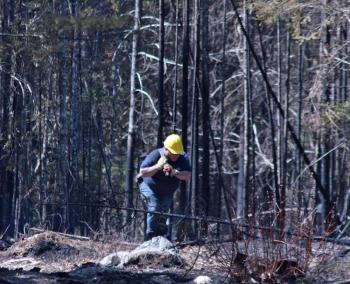 Sometimes, hoses can be brought short distances into woods fires, but it’s hard work lugging them in, and then out again. (Photo by Holly S. Edwards)
Sometimes, hoses can be brought short distances into woods fires, but it’s hard work lugging them in, and then out again. (Photo by Holly S. Edwards)
It may seem like all that rain earlier in the week made things damp enough to safely burn brush in your yard, but the rash of grass, field and woods fires in Knox County Thursday and Friday indicates it did not. Dry air, lots of natural fuel on the ground and persistent winds are a wildfire’s best friends.
This time of year and well into the fall, the Maine Forest Service issues a daily Wildfire Danger Report, classifying zones around the state with predicted fire danger and "class day" levels. The MFS also issues "Red Flag" warnings on days when the chance of wildfire danger is at its highest.
On Red Flag days, all outdoor burning is prohibited. And most municipal fire chiefs, town managers and other officials authorized by the Forest Service to issue burn permits locally, won't issue burn permits for days that are Class 3 and above.
Since Friday, Hancock County, coastal and central Washington County and Southern Penobscot County have been under a Red Flag warning during daylight hours. If the Midcoast doesn’t see some relief in the form of rain soon, it too will likely fall under the same warning, when just one carelessly tossed cigarette butt can cause calamity by igniting mulch beside a building or catching leaves and grass in a ditch on fire.
Permitted fires can also get out of control on even the lowest fire danger days. A change in wind direction, or an increase in the wind can cause seemingly controlled fires to get out of control as the fire advances quicker than anticipated, or in an unintended direction. On a higher class day, and also with a permit, a controlled fire can jump and cause a secondary fire that can go unnoticed and then out of control.
For Knox and Waldo counties, which are in the Forest Service's Weather Zone 1 for predicted fire danger and class day, April 16 is a “Very High” predicted fire danger, or Class 4. That prediction and class holds true for the zones along the the entire coast of Maine, as well as the interior half of the state in a line from approximately Houlton to Millinocket, southwest to Bethel and Fryeburg.
Class 4 is deemed very high in the National Fire Danger Rating System, used by the MFS, and it means that fires start very easily from all causes, and immediately after ignition, spread rapidly and increase quickly intensity. Spot fires are a constant danger, and fires burning in light fuels may quickly develop high-intensity characteristics; such as long-distance spotting and fire whirlwinds, when they burn into heavier fuels. Direct attack at the head of such fires is rarely possible after they have been burning more than a few minutes.
It may seem like the ground is damp, but it's the surface material, the dry grass, dead leaf and pine needle tinder, and the blown down trees and limbs in the surrounding woods of even the most meticulously-maintained properties that are the fuel for wildfires. And then there is the wild woods that makes up so much of Maine, even in what some would consider built-up communities, like Camden, Rockport, Rockland and Belfast. There is plenty of woods and wild land around homes and business for a fire to consume, which then can put structures, machinery, and people and animals in harm's way.
Mustering enough manpower can be an issue for even the most robust volunteer fire department when wildfires start and take hold, and it often requires resources from multiple towns and many hours, to extinguish these stubborn fires.
And so, when the MFS declares it a Class 3 or Class 4 day, there should be no burning. Not even small campfires, in fire pits, which if left improperly extinguished, can lead to disaster, or trouble for the person who started it.
In the words of at least one local, also a Lincolnville firefighter, on Facebook Saturday morning, "No burning today. Just rake the lawn and sip on a beverage of your choice....it's dry...it's windy."
Grass that hasn't started greening the yard yet, mixed with dead grass and weeds, last fall's leaves, downed limbs and dead pine trees, dry air and wind, those are all the elements of another kind of perfect storm: wildfire.
To keep track of the state's Daily Predicted Class Day information, click here.
To request an online burning permit, click here.
National Fire Danger Rating System Description
Low. Fuels do not ignite readily from small firebrands, although a more intense *-heat-* source, such as lightning, may start many fires in duff or punky wood. Fires in open cured grassland may burn freely a few hours after rain, but woods fires spread slowly by creeping or smoldering, and burn in irregular fingers. There is little danger of spotting.
The color code for Low is green
Moderate. Fires can start from most accidental causes, but with the exception of lightning fires in some areas, the number of starts is generally low. Fires in open-cured grassland will burn briskly and spread rapidly on windy days. Woods fires spread slowly to moderately fast. The average fire is of moderate intensity, although heavy concentrations of fuel, especially draped fuel, may burn hot. Short-distance spotting may occur, but is not persistent. Fires are not likely to become serious, and control is relatively easy.
The color code for Moderate is blue
High. All fine dead fuels ignite readily and fires start easily from most causes. Unattended brush and campfires are likely to escape. Fires spread rapidly and short-distance spotting is common. High-intensity burning may develop on slopes, in concentrations of fine fuel. Fires may become serious and their control difficult, unless they are hit hard and fast while small.
The color code for High is yellow
Very High. Fires start easily from all causes, and immediately after ignition, spread rapidly and increase quickly in intensity. Spot fires are a constant danger. Fires burning in light fuels may quickly develop high-intensity characteristics; such as, long-distance spotting and fire whirlwinds, when they burn into heavier fuels. Direct attack at the head of such fires is rarely possible after they have been burning more than a few minutes.
The color code for Very High is orange
Extreme. Fires under extreme conditions start quickly, spread furiously, and burn intensely. All fires are potentially serious. Development into high-intensity burning will usually be faster and occur from smaller fires than in the very high danger class (item 4). Direct attack is rarely possible, and may be dangerous, except immediately after ignition. Fires that develop headway in heavy slash or in conifer stands may be unmanageable while the extreme burning condition lasts. Under these conditions, the only effective and safe control action is on the flanks until the weather changes or the fuel supply lessens.
The color code for Extreme is red
Event Date
Address
United States

